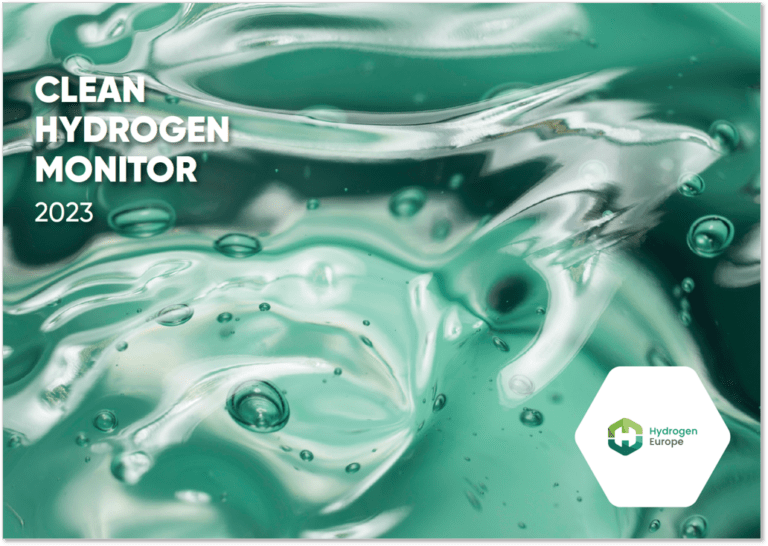The 2023 report on the clean hydrogen market in Europe provides a comprehensive analysis of its current state, future prospects, and challenges. Here are the key statements summarized in approximately 500 words:
- Hydrogen Production and Capacity: European hydrogen production capacity remained stable at around 11.5 million tonnes (Mt) in 2022. Power-to-hydrogen (electrolytic) capacity grew by 23% to 228 MWel by September 2023. However, to meet the REPowerEU target of 140 GWel, a 150% annual growth rate is required.
- Hydrogen Consumption: Approximate hydrogen consumption decreased from 8.7 Mt in 2020 to 8.2 Mt in 2022. Consumption in refining increased by 8%, but overall consumption fell due to high gas prices affecting ammonia and chemical sectors.
- Policy and Regulation: The Fit for 55 package, Renewable Energy Directive (RED), FuelEU Maritime, ReFuelEU Aviation, and Alternative Fuels Infrastructure Regulation (AFIR) are key policy drivers for clean hydrogen. These policies set consumption obligations and define renewable fuels of non-biological origin (RFNBO), supporting the decarbonization of transport and industry sectors. The Hydrogen and Decarbonised Gas Package, still in progress, will clarify the definition of low-carbon hydrogen.
- Funding and Financing: Europe needs to mobilize between EUR 1.2 and 2.6 trillion, equating to EUR 50 to 100 billion annually until 2050. Funding support comes from various EU initiatives like the Clean Hydrogen Partnership, Innovation Fund, Hydrogen Bank, and the Important Project of Common European Interest (IPCEI). Private finance, mainly through equity investments, is critical but needs to be complemented with debt financing.
- Production Projects: The number of power-to-hydrogen projects expected to be operational by 2030 increased from 628 in 2022 to 813 in 2023. However, project delays are common due to regulatory uncertainty, funding gaps, and other challenges. Only about 4.4 Mt of the planned 15.6 Mt annual production capacity for 2030 is in an advanced development stage.
- Industrial Demand: Announced clean hydrogen consumption in industry is expected to reach 7.1 Mt/year by 2030, primarily in the ammonia and steel sectors. The steel sector faces additional pressure to decarbonize due to the Carbon Border Adjustment Mechanism (CBAM). However, finding off-takers for clean hydrogen remains a challenge.
- Hydrogen Mobility Market: There is a growing interest in hydrogen powertrains for heavy-duty vehicles, buses, and maritime applications. However, challenges include developing standards, refueling infrastructure, and ensuring competitive pricing.
- Infrastructure Development: Countries like Belgium and the Netherlands are leading in developing national hydrogen networks. Hydrogen storage is recognized as crucial for both seasonal energy storage and optimizing production-consumption profiles. Germany, France, and Spain are actively developing large-scale hydrogen storage projects.
- Industry Progress and Future Outlook: Since the European Hydrogen Strategy in 2020, the regulatory framework has nearly completed, and significant funding is available for clean hydrogen projects. While there are struggles in matching production with off-taker demand, industries like green ammonia, green steel, and refining are pioneering the use of clean hydrogen. The focus is now on scaling up projects and bridging the gap between production costs and off-taker willingness to pay, positioning Europe as a key player in the global clean hydrogen market in a net-zero future.

